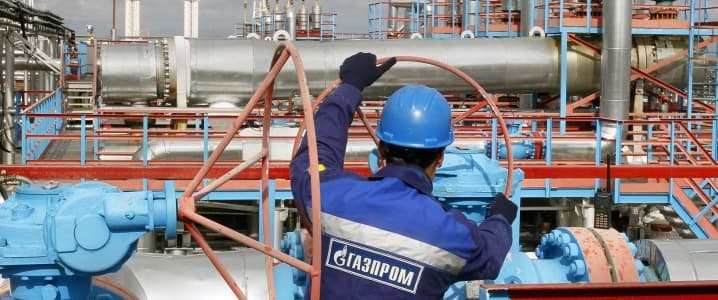Gloom and doom has been the dominant mood on international gas markets for a while now, and the latest news from Russia is likely to add fuel to the pessimism: Gazprom has updated its 2016 budget, increasing the total spending planned for the year by just US$170 million (11 billion rubles).
This is a meager 1.3-percent rise on the budget approved in December 2015, in contrast to an upward revision of 27 percent for the company’s 2014 budget, and an almost 1.5-fold increase for the 2013 budget.
Gazprom has a tradition of revising its budget for the current year in the fall.
All indications are that those happy times of 2013 and 2014 are long gone. Gas is cheap, and it’s likely to continue to be cheap in the observable future. In response, Gazprom is tightening its belt.
The total spending for 2016 is set at US$13.56 billion (853 billion rubles), of which US$2.75 billion (173 billion rubles) will be long-term investments. This figure also includes investments in subsidiaries, as economic daily Kommersant notes, and represents a threefold increase on the US$1.02-billion (64.4 billion rubles) budgeted last December.
Capex, on the other hand, was slashed by 13 percent to US$10.81 billion (680 billion rubles), while external borrowings were raised to US$3 billion (187.8 billion rubles), from an initial US$1.43 billion (90 billion rubles). Next month, according to Reuters, the gas giant will go on a road show for a eurobond issue that it hopes will generate some US$1.1 billion in proceeds.
The figures suggest that Gazprom was overoptimistic when it based its 2016 budget on US$50 a barrel as the average price for Brent crude and US$199 per million cubic meters of natural gas for export. Gazprom may also have been optimistic about its new projects in the EU, over which it continues to face persistent opposition¬—opposition that Gazprom still must find a way around.
Meanwhile, the company has restarted work on the Turkish Stream pipeline and is negotiating another pipeline project with Indian state-owned company Engineers India Ltd. This latter project, valued at US$25 billion, would significantly expand Gazprom’s Asian exposure, but could put it at odds with one of Russia’s main geopolitical partners at the moment: Iran. Related: Why Permian Prices Will Keep Breaking Records
Russia and Iran have demonstrated a best-friends attitude lately, but when gas is concerned, cracks may start appearing in the solid-looking bond between the two countries. Iran has substantial export ambitions for Asia – the main market for its oil and gas, and this would almost certainly interfere with Gazprom’s own growth plans for the region.
On the other hand, Gazprom has certainly been happy to hear that Iran has no such ambitions for the European market, where the Russian company has a solid presence. “[The] European market is not the market where we will compete with Russia. We will not be a substitute for Russia,” Iran’s news agency Shana quoted Hamid Reza Araqi, managing director of the national Iranian Gas Company, as saying recently.
Happy with this news or not, Gazprom must be acutely aware that it can’t put all its eggs in the European basket, figuratively speaking. To ensure its sustainable growth, especially in the face of the unwavering determination of the EU to reduce its reliance on Russian gas, Gazprom needs the Asian markets.
To boost its presence there, Gazprom needs more space to maneuver, which means more cash. Currently, its situation is worse than in previous years, but is still far from critical, so the cash is likely to be there if and when needed, despite its ho-hum budget. What’s more, Gazprom is a state-owned company and a major contributor to the federal budget, meaning that Gazprom can always rely on Moscow’s support, at least as long as gas remains Russia’s most vital export commodity, along with oil.
By Irina Slav for Oilprice.com
More Top Reads From Oilprice.com:
- EIA’s Contradictory Oil And Gas Predictions For 2017
- Blowing The Competition Away: The Wind Power Boom In The U.S.
- Oil Bulls Return To The Market Despite Bearish Fundamentals


















